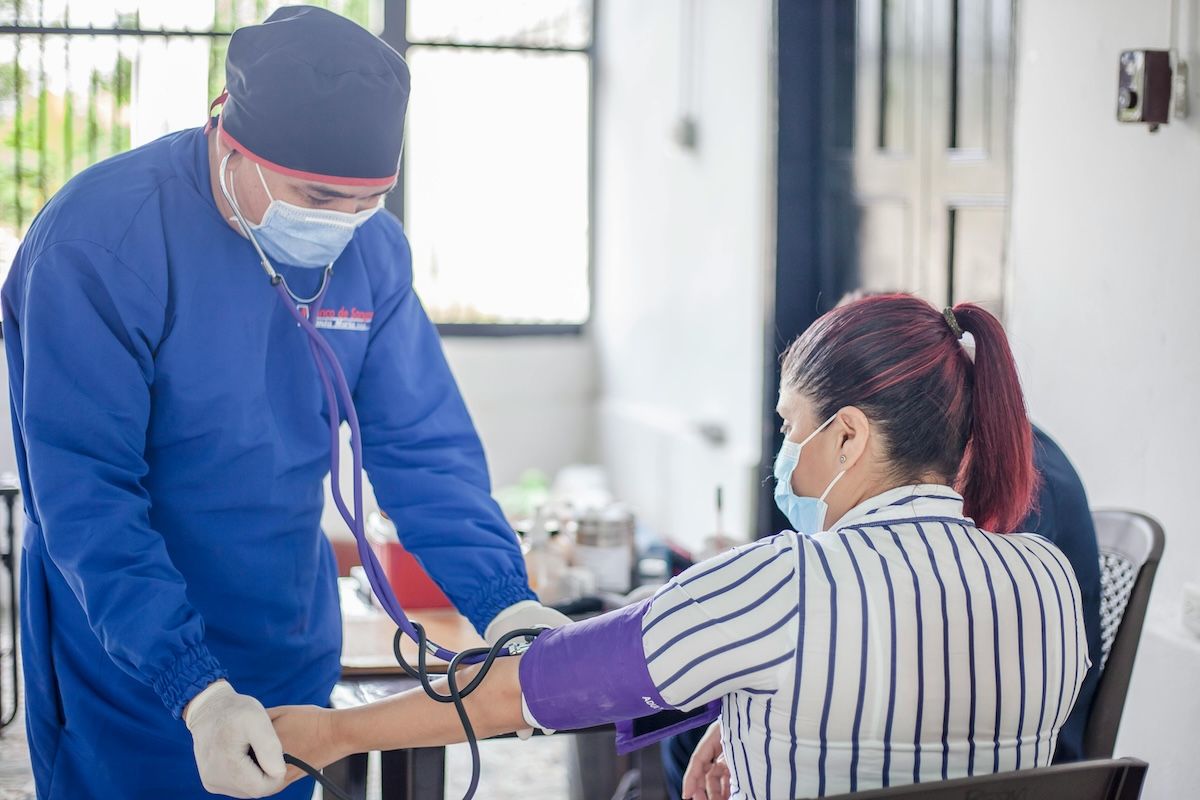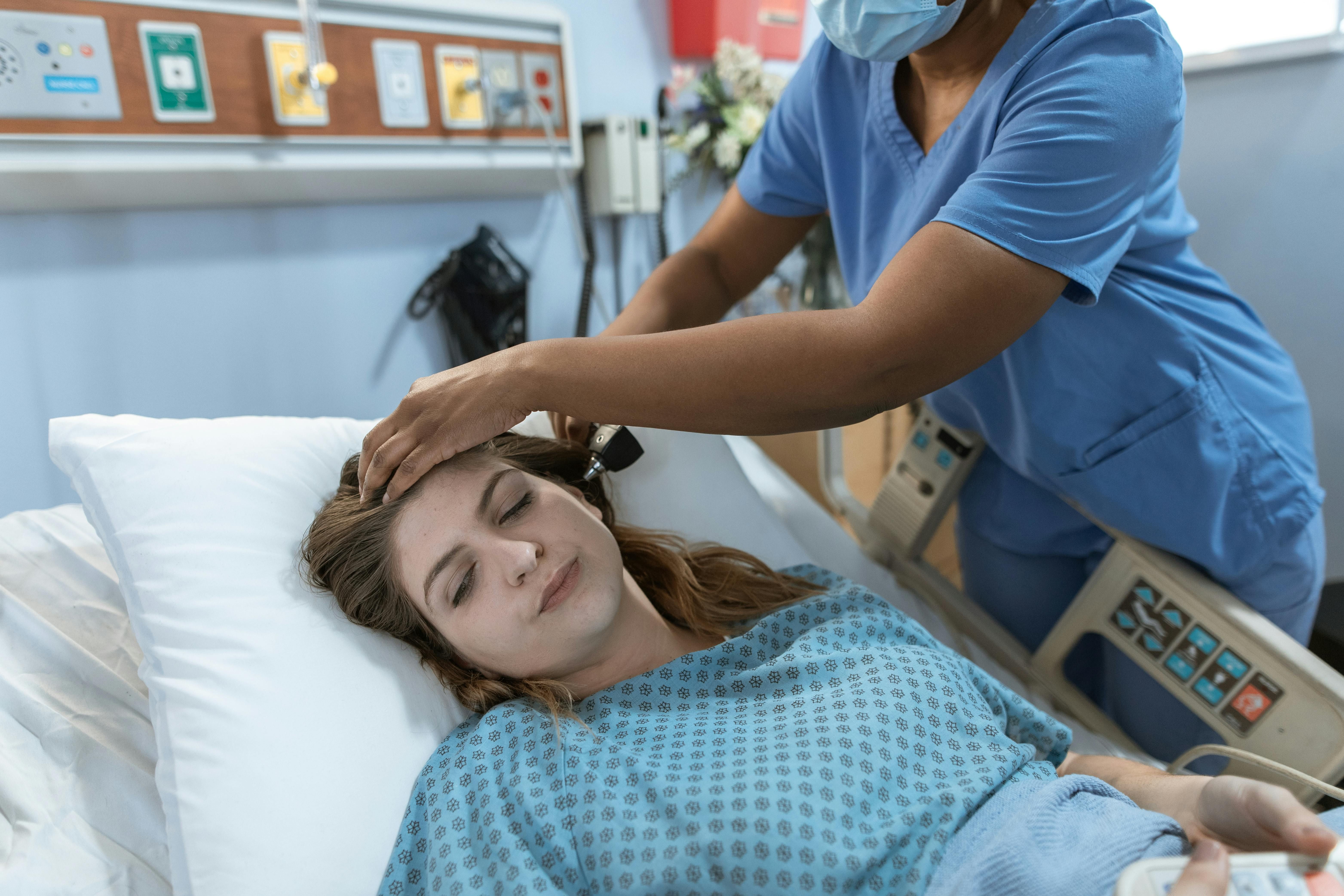Can Medical Assistants Draw Blood? 2026 State-by-State Analysis
Medical assistants (MAs) often face confusion about whether they are legally allowed to draw blood in their state, as regulations differ across the country. This uncertainty can lead to confusion about certification requirements and impact job opportunities. The demand for medical assistants is expected to grow by 15% from 2023 to 2033, much faster than the average for other occupations, making it increasingly important for MAs to understand their scope of practice.
This article offers a state-by-state analysis of the legal requirements for medical assistants performing phlebotomy, including necessary certifications and restrictions. Prepared by career planning experts, it will help clarify these rules and guide MAs toward compliance, ensuring they can navigate their careers with confidence.
Key Things You Should Know About Medical Assistants
- Medical assistants juggle clinical duties like taking vitals and drawing blood with administrative tasks such as managing records and scheduling appointments.
- The legality of medical assistants drawing blood varies widely by state, with some requiring formal certification, supervision, or specific training.
- Earning a phlebotomy certification not only meets legal requirements in some states but also enhances employability and validates professional competency.
- Medical assistant programs integrate classroom theory, lab simulations, and externships to ensure students are fully prepared for real-world blood collection.
- While both roles may involve drawing blood, medical assistants are versatile generalists, whereas phlebotomists are specialized experts in blood collection and specimen handling.
Table of Contents
- What are the daily responsibilities of a medical assistant?
- Where can medical assistants legally draw blood in 2026?
- What certifications allow medical assistants to draw blood?
- How do medical assistant training programs teach phlebotomy?
- What is the difference between a medical assistant and a phlebotomist?
- What are the legal risks of MAs drawing blood without certification?
- Do clinics require phlebotomy skills for hiring MAs?
- What techniques do MAs learn for drawing blood safely?
- Could Advanced Education Accelerate Your Healthcare Career?
- Can Cross-Training in Administrative Skills Enhance Clinical Performance?
- What are the career benefits of being certified in phlebotomy?
- What is the role of state medical boards in MA practice?
- How Can Medical Assistants Access Ongoing Phlebotomy Training?
- Other Things You Should Know About Medical Assistants
What are the daily responsibilities of a medical assistant?
Medical assistants play a vital role in healthcare settings, and their daily responsibilities typically involve a mix of clinical and administrative tasks. Here’s a breakdown of what a medical assistant might do during a typical day:
Clinical Responsibilities
Medical assistants often handle tasks that support physicians and provide direct care to patients. These include:
- Taking patient vital signs such as temperature, pulse, and blood pressure
- Recording patient medical histories and symptoms
- Preparing examination rooms and sterilizing instruments
- Assisting physicians during exams and minor procedures
- Administering injections and medications (if permitted by state law)
- Drawing blood and collecting other lab specimens
- Performing basic lab tests
- Educating patients about medications, treatments, or aftercare instructions
Administrative Responsibilities
Medical assistants also take care of many front-office duties that keep a medical facility running smoothly:
- Scheduling patient appointments
- Answering phones and greeting patients
- Managing and updating electronic health records (EHR)
- Handling billing, coding, and insurance claims
- Processing payments and maintaining patient accounts
- Coordinating referrals and communicating with other healthcare providers

Where can medical assistants legally draw blood in 2026?
Medical assistants in the United States are generally permitted to draw blood (perform phlebotomy) under the supervision of a licensed healthcare provider. However, specific regulations and requirements vary by state. Many aspiring healthcare professionals, including those interested in online sonography programs, often begin their careers with foundational roles like medical assisting and phlebotomy to gain clinical experience.
States Requiring Phlebotomy Certification or Licensure
In the following states, medical assistants must obtain specific phlebotomy certification or licensure to legally perform blood draws:
- California: Medical assistants are allowed to draw blood only after completing a minimum of 10 hours of venipuncture training as mandated by state regulations.
- Louisiana: A phlebotomy certification is required for medical assistants to perform blood draws.
- Nevada: Medical assistants must possess a phlebotomy certification to conduct blood draws.
- Washington: Medical assistants are required to obtain a credential from the Washington State Department of Health. To perform blood draws, they must apply for a phlebotomy certification, which necessitates the successful completion of a phlebotomy training program.
States with Specific Supervision or Training Requirements
In some states, medical assistants can draw blood under certain conditions, such as specific training or supervision:
- Georgia: Medical assistants are permitted to perform venous blood draws and administer medications by intramuscular or subcutaneous injection, provided a licensed provider is present in the building.
- Florida: Medical assistants can perform blood draws as part of their defined scope of practice, which includes administering injections and collecting specimens for laboratory testing.
- Delaware: Medical assistants are authorized to conduct blood draws and perform other tasks delegated to them by a licensed provider.
General Guidelines for Other States
In most other states, medical assistants may draw blood if:
- They have received appropriate training.
- The task is delegated by a licensed healthcare provider.
- They operate under the supervision of a licensed provider.
Do you also wonder: Can MA give injections? Check out our separate article to know the answer.
What certifications allow medical assistants to draw blood?
Do medical assistants need to be certified? To legally draw blood as a medical assistant, individuals typically need to obtain phlebotomy certification—especially in states where this is required by law (like California, Washington, or Nevada). Here's a list of the most recognized certifications that allow medical assistants to perform venipuncture:
Certified Phlebotomy Technician (CPT)
The CPT certification from the NHA is a popular choice for medical assistants who want to specialize in phlebotomy. This certification validates a candidate’s ability to perform venipuncture safely and accurately, follow laboratory protocols, and handle specimens appropriately. It's widely recognized across healthcare employers and is a solid entry point into a more focused phlebotomy or lab tech career. Many training programs aligned with this certification also include hands-on clinical experience, preparing candidates to work confidently in fast-paced environments.
- Offered by: National Healthcareer Association (NHA)
- Eligibility: Completion of a phlebotomy training program and clinical experience
- Scope: Recognized in most states; validates skills in blood collection, safety, and specimen handling
Phlebotomy Technician (PBT)
The PBT certification from ASCP is known for its high standards and is especially valued in hospitals, diagnostic labs, and academic medical centers. This certification requires either formal education or verified work experience and passing a rigorous exam. It emphasizes quality control, infection prevention, and laboratory safety procedures.
Earning the PBT credential demonstrates a strong commitment to the clinical accuracy and professional ethics expected in laboratory settings, making it a standout credential for career advancement. For those exploring parallel careers in healthcare, understanding options like phlebotomy can also complement pathways such as the fastest way to become a radiology tech.
- Offered by: American Society for Clinical Pathology (ASCP)
- Eligibility: Accredited phlebotomy training or on-the-job training with documentation
- Scope: Highly respected credential; often required in hospitals and labs
Registered Phlebotomy Technician (RPT)
AMT's RPT certification is a nationally recognized credential that validates a medical assistant’s expertise in drawing blood and processing lab specimens. Applicants can qualify through education, military training, or work experience, making it flexible for those already in the field. The RPT exam covers practical knowledge such as patient identification, specimen handling, and regulatory compliance. This certification is often a good fit for those seeking roles in outpatient clinics, mobile phlebotomy services, and physician offices.
- Offered by: American Medical Technologists (AMT)
- Eligibility: Completion of an approved program or documented work experience
- Scope: Nationally recognized, good for entry-level and experienced medical assistants
National Certified Phlebotomy Technician (NCPT)
The NCPT certification by NCCT is another reputable option for medical assistants interested in phlebotomy. It covers essential competencies like venipuncture techniques, safety protocols, specimen labeling, and legal considerations in patient care. NCCT accepts multiple pathways to eligibility, including formal training or experience, making it accessible for both new graduates and seasoned professionals. Employers appreciate this certification for its comprehensive assessment of both technical and procedural knowledge.
- Offered by: National Center for Competency Testing (NCCT)
- Eligibility: Through training programs, military training, or work experience
- Scope: Widely accepted in both private and public healthcare settings
California Certified Phlebotomy Technician (CPT I or CPT II)
California has its own state-regulated phlebotomy certification system. Medical assistants must obtain a CPT I license to perform venipuncture, which involves completing a state-approved training program and passing a written exam. CPT II allows for more advanced procedures, such as arterial punctures. This certification is mandatory to draw blood legally in California and is highly regulated to ensure patient safety. The training includes both didactic coursework and a specified number of supervised blood draws, offering strong practical preparation.
- Offered by: California Department of Public Health
- Eligibility: State-specific training and licensing; required to perform venipuncture in CA
- Scope: Mandatory for medical assistants who want to draw blood in California
How do medical assistant training programs teach phlebotomy?
One common question students have is, can medical assistants draw blood? The answer is yes—they receive dedicated training in phlebotomy techniques to safely and effectively perform venipuncture under supervision and within state guidelines.
Medical assistant training programs typically teach phlebotomy as part of the broader clinical curriculum, blending classroom instruction with hands-on practice to prepare students for real-world blood collection procedures.
Classroom Instruction (Didactic Training)
Students start by learning the theory and science behind phlebotomy. The classroom curriculum typically includes:
- Anatomy and physiology of veins and arteries
- Infection control and safety protocols (e.g., OSHA standards)
- Medical terminology related to blood and lab tests
- Legal and ethical considerations (such as informed consent)
- Types of blood tests and collection tubes
The goal of this instruction is to provide students with a solid understanding of the principles of venipuncture, patient care, and lab procedures.
Skills Lab Training (Simulated Practice)
After the theoretical lessons, students practice phlebotomy techniques in a controlled lab setting. They use:
- Mannequin arms or practice pads to develop proper needle technique
- Various blood collection tools such as vacutainers, butterfly needles, and syringes
- Safe patient identification, labeling, and handling procedures
The objective of these lab sessions is to help students build confidence and familiarity with the tools and techniques before interacting with real patients.
Clinical Externship or Practicum
Most accredited programs require students to complete an externship in a healthcare setting, such as:
- Hospitals
- Clinics
- Physician offices
- Labs or blood draw centers
During this time, students are supervised as they perform real venipunctures and gain hands-on experience in a professional environment. The externship is crucial for applying classroom learning to real-world situations and developing patient interaction skills.
Certification Preparation (Optional but Encouraged)
Many training programs offer review sessions or preparation courses for phlebotomy certification exams, such as:
- NHA’s Certified Phlebotomy Technician (CPT)
- NCCT’s National Certified Phlebotomy Technician (NCPT)
- AMT’s Registered Phlebotomy Technician (RPT)
This preparation helps students get ready for the certification exams, which are often required by employers and enhance job prospects.
What is the difference between a medical assistant and a phlebotomist?
The roles of medical assistants and phlebotomists both involve patient care and laboratory work, but they differ significantly in their scope of practice, training, and daily responsibilities. Here's a breakdown of the key differences:
Job Duties
A medical assistant performs a broad range of clinical and administrative tasks, including:
- Taking patient histories and vital signs
- Preparing patients for examinations
- Assisting physicians with exams and procedures
- Administering medications or injections
- Performing basic laboratory tests (e.g., urinalysis, blood glucose testing)
- Handling medical records and insurance paperwork
- Medical assistants are trained to handle a variety of medical office tasks, both clinical and administrative, making their role versatile.
A phlebotomist is specialized in blood collection and primarily focuses on:
- Drawing blood from patients for tests, donations, or donations
- Preparing blood samples for laboratory analysis
- Ensuring proper labeling and handling of specimens
- Adhering to safety protocols to prevent infection or contamination
The phlebotomist's duties are more narrowly focused on blood collection and specimen handling, often working in hospitals, clinics, or blood donation centers.
Training and Education
Medical assistants typically complete a 1-2 year training program that includes both classroom instruction and clinical practice. Their training covers a wide array of medical skills, including phlebotomy, basic clinical procedures, and administrative tasks.
Some may choose to earn certifications, such as Certified Medical Assistant (CMA) or Registered Medical Assistant (RMA). These foundational programs can also serve as stepping stones for more advanced healthcare roles, including pathways like online PharmD programs, which allow for continued education and specialization in pharmacy.
Meanwhile, phlebotomists undergo more focused training that typically lasts several weeks to a few months. They complete a program specifically designed to teach blood collection techniques, safety standards, and laboratory processes. While they can be trained on the job, many phlebotomists seek certification, such as Certified Phlebotomy Technician (CPT), to increase employability.
To answer the question can medical assistants draw blood, it depends on state regulations and employer guidelines, but with the right training, it’s a common and expected part of their role.
Work Environment
Medical assistants can work in a variety of healthcare settings, including:
- Physician's offices
- Outpatient clinics
- Hospitals
- Long-term care facilities
They may switch between clinical and administrative tasks depending on the needs of the healthcare facility.
Phlebotomists primarily work in environments where blood collection is a core function, including:
- Hospitals and medical laboratories
- Blood donation centers
- Outpatient clinics
- Research facilities
Their job is often more focused on interacting with patients during blood collection.
Career Outlook and Specialization
Due to their wide-ranging skills, medical assistants are in demand across many healthcare facilities. They may also pursue specialization in areas such as pediatrics, cardiology, or dermatology, leading to career advancement opportunities. The average salary for a medical assistant is generally higher compared to phlebotomists due to the broader scope of their duties.
Phlebotomists typically remain focused on blood collection, but they can advance by gaining experience in specialized blood work or moving into supervisory or training roles. Their salary is often lower than that of medical assistants, as their role is more specialized.
Certification and Licensing
Certification for medical assistants is optional, but many choose to earn a credential such as Certified Medical Assistant (CMA) or Registered Medical Assistant (RMA). Certification for medical assistants can include knowledge of clinical skills, administrative duties, and medical office management.
On the other hand, phlebotomists can also obtain certification, such as Certified Phlebotomy Technician (CPT) or Registered Phlebotomy Technician (RPT). Certification is often required or preferred by employers in most settings.
In summary, while both roles may involve drawing blood, medical assistants have a much broader range of responsibilities and are cross-trained in both clinical and administrative tasks. On the other hand, phlebotomists focus specifically on blood collection and related tasks. Their training, job functions, and career outlook reflect these differences.
Aside from an MA and phlebotomist, you may also want to know the difference between medical assistant and medical administrative assistant.
What are the legal risk of MAs drawing blood without certification?
If a medical assistant (MA) draws blood without the required certification, it can create significant legal risks for both the individual and the healthcare facility. Can medical assistants draw blood without certification? While it's possible in some cases, doing so without proper training or certification can lead to violations of state laws, potential patient harm, and regulatory non-compliance. Here's a look at the key legal risks involved:
Violation of State and Federal Regulations
Many states have specific laws that regulate who can perform phlebotomy, including requirements for certification or licensure. In states where certification is mandatory for drawing blood, an MA without certification is violating state laws. This could result in penalties for the MA and the employer, including fines, lawsuits, or loss of license.
The Clinical Laboratory Improvement Amendments (CLIA) regulate laboratory standards and procedures. CLIA compliance includes ensuring that only qualified personnel perform certain tasks, such as blood collection. Drawing blood without proper certification may violate CLIA regulations, leading to penalties or a loss of accreditation for the healthcare facility.
In the same way that aspiring mental health professionals must follow the steps to become a psychiatrist—which include extensive education, licensure, and training—medical assistants must also meet regulatory standards before performing clinical procedures like phlebotomy.
Patient Safety Concerns
Drawing blood requires specific techniques to prevent complications such as hematomas, infections, or nerve damage. An unqualified MA could use improper techniques, resulting in patient harm. If an incident occurs, the MA could face malpractice claims or be held liable for negligence.
Improper blood collection can lead to inaccurate test results, which may delay diagnosis or result in inappropriate treatment. This could harm patients and open the door to medical malpractice suits.
If an MA without proper training or certification does not follow infection control protocols, they could expose patients to infections or bloodborne pathogens, leading to lawsuits or regulatory penalties.
Liability for the Employer
Employers can be held responsible for the actions of their employees under the legal principle of vicarious liability. If an unqualified MA draws blood and something goes wrong, the healthcare facility could be sued for damages or face fines. This risk is heightened if the employer failed to ensure proper training and certification for their staff.
Healthcare facilities that allow unqualified personnel to perform blood draws could risk losing their medical or laboratory accreditation, especially if the facility is found to be non-compliant with state regulations or CLIA standards. This loss of accreditation can have long-lasting financial and reputational consequences.
Breach of Professional and Ethical Standards
Medical assistants are expected to adhere to ethical standards, including ensuring that they work within their scope of practice. Drawing blood without certification is a breach of professional conduct, which could lead to:
- Disciplinary action from professional organizations or licensing boards
- Termination of employment
- Damage to professional reputation or future job opportunities
Civil and Criminal Penalties
If a patient is harmed due to the MA's failure to follow appropriate blood-drawing protocols, they may file a civil lawsuit for damages. This could result in financial compensation for the victim and additional costs for legal defense.
In some cases, drawing blood without certification could lead to criminal charges if it's deemed an intentional act or gross negligence. This is especially the case if the MA is found to be repeatedly or intentionally acting outside of their legal scope of practice.
Risk of Non-Insurance Coverage
If an MA is not properly certified and an incident occurs, malpractice insurance may not cover the claim. In the absence of certification, the healthcare facility’s insurance could argue that the incident resulted from the MA's failure to meet required standards, leaving the employer exposed to legal and financial liability.

Do clinics require phlebotomy skills for hiring MAs?
Yes, many clinics require phlebotomy skills when hiring medical assistants (MAs), though the specific requirements can vary depending on the type of clinic, location, and the clinic's needs. Here's why phlebotomy is often a key skill for MAs and how it affects hiring practices:
Broader Scope of Duties in Clinical Settings
So in clinics, can medical assistants draw blood? Well, they are often expected to perform a wide range of tasks, including both administrative and clinical duties. Phlebotomy is considered a core clinical skill because blood draws are commonly requested for diagnostic tests, making it essential in many settings.
Clinics that handle a variety of services, such as routine check-ups, lab work, or diagnostic testing, prefer MAs who can perform blood draws efficiently. Having MAs trained in phlebotomy reduces the need to hire separate phlebotomists, which can be more cost-effective for the clinic.
Patient Care and Convenience
Many patients prefer to have all of their services, including blood draws, handled by one professional during their visit. This enhances the patient experience and improves the efficiency of the clinic.
In smaller or more specialized clinics, having MAs with phlebotomy skills ensures that the clinic can handle patient care from start to finish, without having to call in additional staff for simple tasks like blood collection.
Cost Savings for Employers
By hiring MAs who are trained in phlebotomy, clinics can save money by reducing the need for specialized phlebotomists, especially in smaller settings. MAs with phlebotomy skills can perform both administrative tasks and clinical duties, which increases the overall efficiency of the clinic.
State-Specific Regulations
In some states, certain phlebotomy tasks may be restricted to certified professionals. Clinics are typically aware of these regulations and may specifically look for MAs who have completed certified training in phlebotomy. This ensures compliance with state laws and healthcare standards.
Competitive Advantage in the Job Market
Clinics may prefer to hire MAs with phlebotomy certification because it makes them more versatile, especially in areas where clinics need to perform blood draws frequently. Having these skills can also give applicants a competitive edge when applying for medical assistant positions in these settings.
Type of Clinic and Specialization
In certain specialized clinics (such as those focused on oncology, cardiology, or endocrinology), blood draws are a regular part of patient care. MAs with phlebotomy skills are highly valued in these settings.
Even in general family practice and urgent care clinics, where MAs are expected to handle a variety of duties, being proficient in phlebotomy can be an essential skill for ensuring smooth operations.
What techniques do MAs learn for drawing blood safely?
Medical assistants (MAs) learn several techniques for drawing blood safely to ensure that the procedure is performed efficiently, effectively, and with minimal risk to the patient. Here are the key techniques and best practices they typically learn in their training:
Proper Patient Identification and Consent
Before drawing blood, MAs are trained to properly verify the patient's identity to avoid any errors with sample collection. This includes checking the patient's name, date of birth, and other identifiers on their chart or wristband.
MAs ensure that the patient understands the procedure and obtains their consent before proceeding, especially if it's the patient's first time having blood drawn.
Many students who start out in a kinesiology degree program later transition into medical assisting or similar healthcare roles, where this type of foundational patient care training becomes highly valuable.
Correct Selection of Collection Site
Medical assistants (MAs) are trained to carefully assess a patient's veins and select the best location for blood collection. This skill is critical when asking the question, can medical assistants draw blood, and the answer depends on proper training. Typically, MAs will choose veins in the antecubital fossa (inner elbow), but veins in the forearm or hand may also be suitable when necessary. They are trained to look for veins that are large, visible, and easy to palpate, while avoiding veins near joints, scars, or previous injury sites that could cause difficulty or discomfort.
Proper Use of Tourniquet
MAs learn how to properly apply a tourniquet about 3-4 inches above the site of the blood draw. The tourniquet should be tight enough to make veins more prominent but not so tight that it causes discomfort or obstructs blood flow. MAs are taught to leave the tourniquet on for no longer than 1 minute to prevent hemoconcentration (where the blood cells become too concentrated due to restricted flow).
Antiseptic Technique
MAs are trained to clean the site thoroughly with alcohol pads or antiseptic wipes. They start from the center of the site and work their way outward in a circular motion to avoid contaminating the area. This reduces the risk of infection. MAs are also taught to allow the site to air dry for a few moments to avoid any irritation from the alcohol during the blood draw.
Could Advanced Education Accelerate Your Healthcare Career?
Medical assistants aiming to broaden their horizons can consider advancing their education as a means to access higher-level clinical or managerial roles. Pursuing advanced degree programs offers deeper insights into patient care dynamics, healthcare policy, and interdisciplinary collaboration, thereby preparing professionals for leadership challenges and expanding their scope beyond routine phlebotomy duties. Additionally, exploring options such as fast track PharmD online programs enables MAs to integrate clinical expertise with pharmaceutical knowledge, paving the way for diversified career pathways and enhanced professional credibility.
Can Cross-Training in Administrative Skills Enhance Clinical Performance?
Medical assistants with robust administrative proficiency can optimize workflow and improve patient service. Integrating skills in patient record management, scheduling, and billing with clinical expertise ensures a more efficient healthcare environment. Leveraging dedicated training programs, such as cheap medical billing and coding classes, supports error reduction and streamlined processes, ultimately contributing to accurate billing and faster reimbursement cycles without compromising quality patient care.
What are the career benefits of being certified in phlebotomy?
Being certified in phlebotomy offers several career benefits, particularly for medical assistants (MAs) and other healthcare professionals. Here are some key advantages:
Expanded Job Opportunities
- Greater Employability: Certification in phlebotomy can make you more attractive to potential employers. Many healthcare settings, including hospitals, clinics, and laboratories, prefer or require phlebotomy certification for job candidates. Having this certification can increase your chances of being hired, as it shows that you have the specialized training needed to perform blood draws safely and effectively.
- Versatility: Certified phlebotomists can work in a variety of settings, including hospitals, doctor’s offices, blood donation centers, laboratories, and urgent care clinics, giving you access to a wider range of job opportunities.
Increased Earning Potential
- Higher Salaries: Certified phlebotomists often earn more than those without certification. Employers value the added expertise, and as a result, they may offer higher wages or more favorable benefits to certified candidates.
- Competitive Edge: The phlebotomy certification serves as evidence of your commitment to the profession, which can also give you a competitive edge in salary negotiations or when applying for promotions within healthcare facilities.
Job Security and Career Advancement
- Improved Job Security: Healthcare is a growing industry, and phlebotomy is a critical skill. With certification, you demonstrate your competence and reliability, which can lead to greater job stability and long-term employment prospects.
- Opportunities for Advancement: Phlebotomy certification may open the door to career advancement within healthcare. You may qualify for higher positions, such as phlebotomy supervisor, or be able to take on additional responsibilities within a clinical setting. Certified phlebotomists may also choose to advance into other specialized areas of healthcare, such as laboratory technology or medical assisting.
Enhanced Professional Credibility
- Recognition of Expertise: Certification validates your knowledge and expertise in phlebotomy, signaling to employers and patients that you are qualified to perform blood draws and related tasks. This boosts your professional credibility and can enhance your reputation within the healthcare field.
- Patient Confidence: Patients may feel more at ease knowing that the person performing their blood draw is certified and has undergone formal training. This helps build trust and improve the overall patient experience.
Development of Specialized Skills
- Mastery of Phlebotomy Techniques: Certification programs equip you with a wide range of phlebotomy techniques, such as how to handle difficult veins, avoid hemolysis, and ensure patient comfort. These specialized skills are valuable assets that make you proficient in a critical area of patient care.
- Knowledge of Safety Standards: Phlebotomy certification includes instruction on infection control, bloodborne pathogens, and proper needle disposal, ensuring you follow safety protocols and contribute to a safer healthcare environment.
Higher Levels of Responsibility
- Performing More Duties: With phlebotomy certification, you are entrusted with more significant responsibilities, such as conducting blood draws independently and managing blood collection in a variety of clinical settings. This increased responsibility can make your job more rewarding and contribute to a sense of professional accomplishment.
- Independence in Clinical Settings: Certified professionals may have the autonomy to perform phlebotomy procedures with minimal supervision, allowing you to work more independently and take on more complex tasks.
What is the role of state medical boards in MA practice?
State medical boards play a critical role in regulating the practice of medical assistants (MAs) by overseeing the standards of education, certification, and professional conduct to ensure safe, competent care for patients. While medical assistants are typically supervised by licensed healthcare professionals like doctors or nurses, state medical boards help define the scope of practice for MAs and ensure that they meet certain qualifications and adhere to ethical and legal standards. Here’s an overview of their role in MA practice:
Defining Scope of Practice
State medical boards help establish and regulate the scope of practice for medical assistants, which defines what tasks MAs are legally allowed to perform in a clinical setting. This includes tasks such as:
- Clinical Duties: Administering injections, taking vital signs, assisting in minor surgeries, and drawing blood.
- Administrative Duties: Scheduling appointments, managing patient records, and handling billing. A professional who is qualified to handle just these administrative duties is more aptly called a medical records manager.
The medical board ensures that MAs practice within their legally defined role and are not performing tasks outside their qualifications or training.
Licensing and Certification Requirements
While MAs are generally not required to be licensed in most states, state medical boards often regulate certification requirements for MAs to ensure they meet certain professional standards. These include:
- Certification: Some states may require MAs to hold certifications, such as the Certified Medical Assistant (CMA) or Registered Medical Assistant (RMA) certifications from accredited organizations like the American Association of Medical Assistants (AAMA) or the American Medical Technologists (AMT).
- Training Programs: Medical boards may also have guidelines for accredited training programs that MAs must complete before being employed in clinical settings, ensuring they meet the competency standards.
Ensuring Compliance with State Laws and Regulations
State medical boards enforce state-specific regulations and ensure that medical assistants comply with legal and professional standards. These may include:
- Confidentiality: Ensuring compliance with laws like the Health Insurance Portability and Accountability Act (HIPAA), which safeguards patient privacy.
- Infection Control: Regulating standards for infection prevention and safety protocols in the clinical setting, including safe handling of needles and disposal of biohazardous waste.
Boards may also investigate complaints about MAs and take disciplinary action, including suspension or revocation of certification, if needed.
Continuing Education and Professional Development
Many state medical boards require continuing education (CE) for MAs to maintain certification. This ensures that MAs stay up-to-date with evolving healthcare practices, new technologies, and changing laws. Continuing education may be mandated through:
- Workshops
- Online courses
- Conferences related to medical assisting, healthcare, or specific skills like phlebotomy or CPR
Continuing education helps MAs remain competent in their roles and ensures that they provide the highest level of care.
Handling Disciplinary Actions and Ethical Oversight
State medical boards are responsible for investigating complaints or violations of professional conduct involving MAs. If an MA is found guilty of misconduct or unethical behavior, the board has the authority to:
- Investigate allegations: This may include claims of malpractice, theft, fraud, or violations of patient confidentiality.
- Impose sanctions: Depending on the severity of the violation, the board may issue warnings, mandate additional training, or even revoke certification to ensure patient safety and trust in the healthcare system.
Boards also set ethical guidelines that MAs must follow in their interactions with patients and other healthcare professionals.
Protecting Public Health and Safety
The overarching goal of state medical boards is to protect public health and safety by ensuring that only qualified and ethical individuals practice in healthcare roles. By regulating medical assistants, medical boards help ensure that MAs provide safe, competent, and patient-centered care, which minimizes risks and enhances the quality of care within the healthcare system.
How Can Medical Assistants Access Ongoing Phlebotomy Training?
Medical assistants seeking to refine and update their phlebotomy skills can leverage a variety of continuing education opportunities. Enrolling in accredited workshops, targeted seminars, and industry-recognized courses enables professionals to stay informed about evolving techniques and updated regulatory standards. Many opt for flexible learning solutions through medical assistant online classes that combine theoretical instruction with practical components, ensuring compliance and bolstering career advancement.
Here’s What Graduates Have to Say about Medical Assisting as a Career
Learning to draw blood has given me the confidence to assist in various medical procedures. I never realized how much of an impact I could have on patients' experience, from calming their nerves to ensuring a smooth process. It's incredibly rewarding to know that I play a role in their healthcare journey. — Taylor
I was initially nervous about the idea of drawing blood, but after my training, I found the process to be surprisingly straightforward. Being skilled in venipuncture has opened up so many career opportunities for me, and I feel proud knowing I’m helping healthcare professionals do their jobs more efficiently. — Jordan
The hands-on experience I received during my training has been invaluable. It’s not just about the technique; it’s about making patients feel comfortable, which has given me a deep sense of fulfillment in my role as a medical assistant. — Isabella
Key Findings
- The demand for medical assistants is projected to grow by 16% from 2020 to 2030, significantly faster than the average for all occupations.
- 250,000 individuals are affected by medical malpractice annually in the United States, highlighting the importance of proper training and certification in medical procedures like phlebotomy.
- From 2023 to 2033, the projected job growth for medical assistants remains strong at 15%, according to the U.S. Bureau of Labor Statistics.
- In states like California, Louisiana, Nevada, and Washington, phlebotomy certification is legally required for medical assistants to draw blood.
- General Medical and Surgical Hospitals employ the highest number of phlebotomists at 47,210, followed closely by Medical and Diagnostic Laboratories with 43,850 employed.
Other Things You Should Know About Medical Assistants
Who is allowed to draw blood?
Blood can be drawn by trained healthcare professionals such as phlebotomists, nurses, medical assistants (MAs), and laboratory technicians—provided they have completed proper training and, in some states, hold certification or licensure. State regulations vary, so requirements depend on local laws and employer policies.
What is the role of a medical assistant in proper blood collection?
A medical assistant's role in blood collection includes preparing the patient, selecting appropriate equipment, performing venipuncture, labeling specimens accurately, and following safety protocols to avoid contamination or injury. They also provide reassurance to patients and monitor for adverse reactions.
What should the medical assistant ask a patient before drawing blood?
Before drawing blood, a medical assistant should ask if the patient has eaten (if fasting is required), if they have a history of fainting or difficult veins, any allergies (especially to latex or adhesive), current medications, or bleeding disorders. This helps ensure a safe and comfortable procedure.
Can an MA become certified in phlebotomy online?
Yes, a medical assistant can pursue phlebotomy certification online through accredited programs, which typically include online coursework paired with in-person clinical practice or externships. Certification can enhance job opportunities and demonstrate specialized skills in blood collection.
References:
- Federico, P. C. (2024, October 9). Medical malpractice statistics | 2025 update. Brockstedt Mandalas Federico LLC.
- U.S. Bureau of Labor Statistics. (2023, May). Medical assistants. Occupational Employment and Wage Statistics. U.S. Bureau of Labor Statistics.
- U.S. Bureau of Labor Statistics. (2023, May). Phlebotomists. Occupational Employment and Wage Statistics. U.S. Bureau of Labor Statistics.
- U.S. Bureau of Labor Statistics. (2024, April 18). Medical assistants. Occupational Outlook Handbook. U.S. Bureau of Labor Statistics.
- Zippia. (2023). Phlebotomist demographics and statistics in the US. Zippia.


































